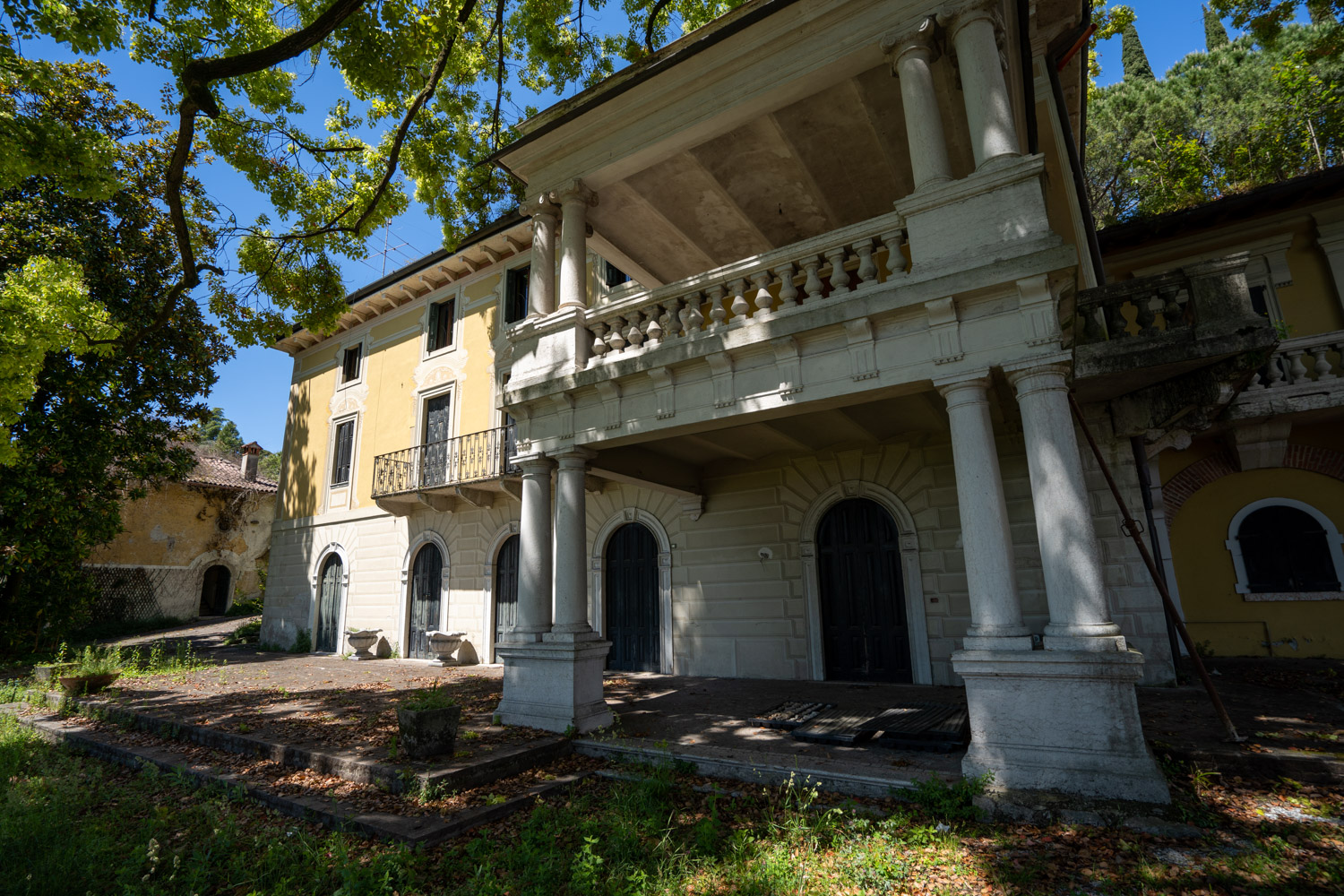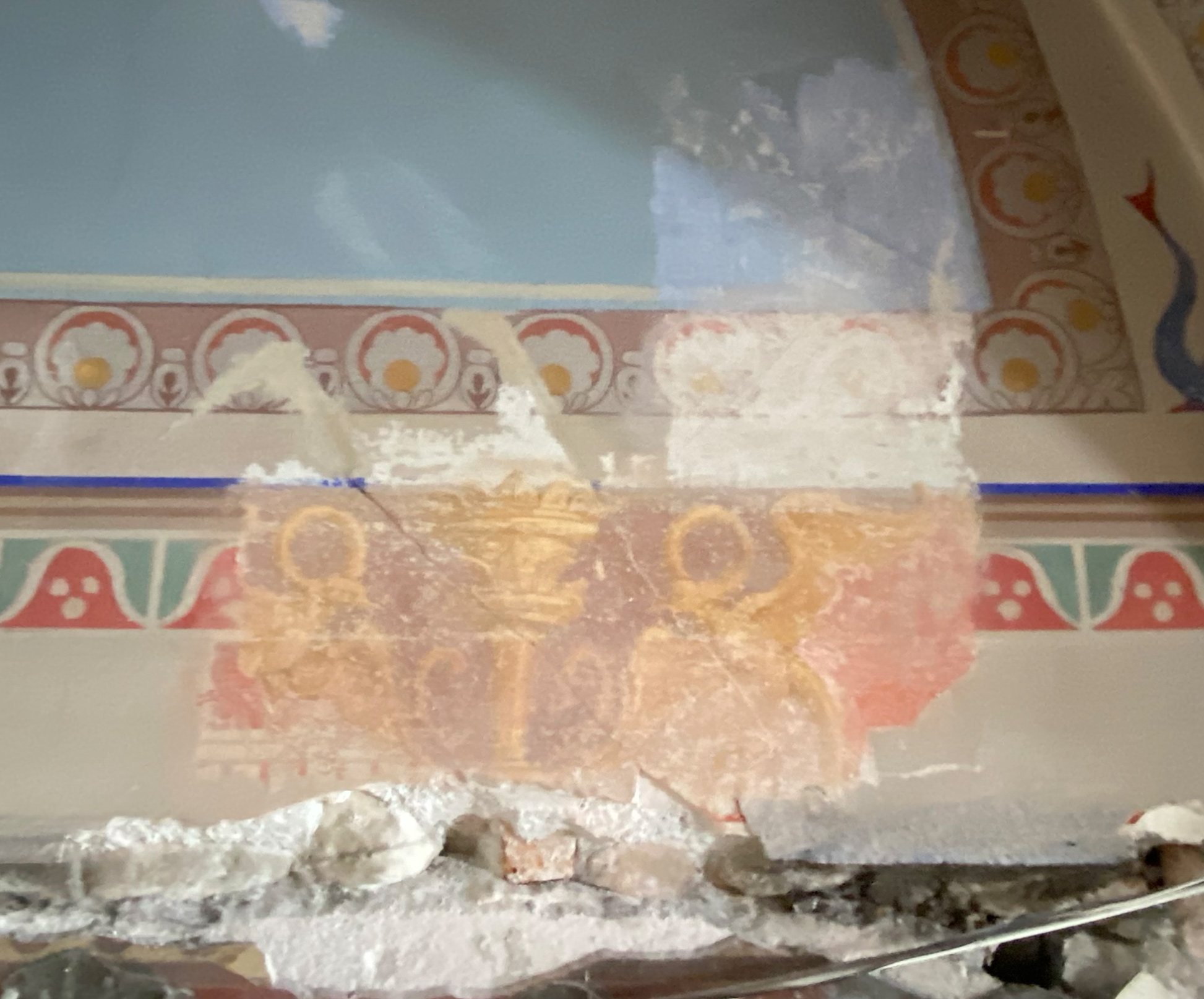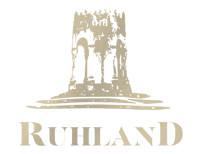VILLA RUHLAND
Technical analysis indicates multiple modifications in the structure and interior of the building. It is apparent from the less conspicuous architectural elements. Most probably, the largest number of modifications took place in the middle of the 20th century. It seems that the current state of the building is the result of the neglect and lack of proper care by the residents from the previous century, who did not consider it important to preserve the original architectural tissue of the villa.
Conducting tests on the frescos and polychromes discovered underneath layers of plaster will reveal whether they were created at the time of the Beschi family in the 17th century or Dr Rhoden’s or at a later time in history.
The villa consists of several buildings: primary – the main residential building, and auxiliary – the caretaker’s house and the greenhouse as well as a large park with tall old trees set against the shore.
The villa is built on three floors, all featuring vaulted ceilings: the ground floor comprises the kitchen and the living area of 250 m2; the first floor – three rooms with wooden floors (181 m2); the second floor – another three rooms (190 m2), plus the attic (28 m2). The three floors are all connected through the central hall with a marble stone staircase and wrought iron banisters. The property spans on the area of 2440 m2 and additional 982 m2 of lakeside garden space.

Villa Ruhland
©Luginsland Limited
AGE OF VILLA RUHLAND
Technical analysis indicates that the villa has been modified multiple times and its architectural design styles altered. Existing written records state that the building was originally erected in the 18th century. However, after conducting a closer examination, it was discovered that the villa may be much older and have its origins in the 17th century, around 100 years before the written records. A detailed report with reference to the revealed frescos will provide evidence on the age of the materials and methods used once appropriate tests are conducted.

Old frescoes discovered in Villa Ruhland
Image: ©Luginsland Limited

